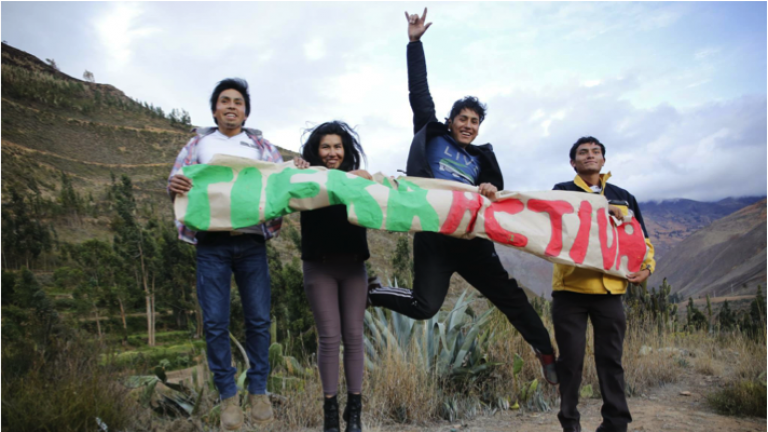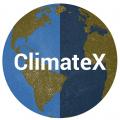
Majandra Rodriguez is a Peruvian anthropologist, sociologist, and sustainability specialist. Having lived, studied, and worked in the United States, United Kingdom, India, and Peru, she has international experience in intercultural, civic, and environmental education. She is a co-founder of TierrActiva Perú: a youth climate justice collective. MIT Climate sat down with Majandra to discuss intersectionality, the climate justice movement in Peru, and her experiences as an activist.
Mikaela: How did you get involved in climate justice?
Majandra: I’ve been involved in environmental justice work for 10 years now. In 2009 there was a national crisis marked by protests in the Peruvian Amazon, particularly in a place called Bagua. The protests were in response to new regulations, required by the Free Trade Agreement between Peru and the United States, which made it easier for oil companies to have concessions on indigenous lands, and for the exploitation of resources to take place. The government ordered a military and police intervention, and as a result of the clashes, over thirty people died.
For me, this was an extremely impactful moment. It took place when I was 19, and has been a defining moment for all of my work since.
Mikaela: How did TierrActiva get started?
Majandra: In 2013, I had the chance to go to Global Power Shift, which was a convention organized by 350.org. We were 500 activists from 100 countries who came together for two weeks.
Through 350.org and Global Greengrants Fund, we had the opportunity to replicate the convening at a national level in Peru. When we organized the first national gathering of youth for climate justice in 2014, that’s when TierrActiva Peru was founded.
The name means “Active Earth” in Spanish. The philosophy of TierrActiva is looking at the climate crisis from a systemic perspective; looking at it as a crisis of the political and economic system, and also as a cultural, spiritual crisis of sorts. These connections across disciplinary and geographic boundaries were really clear to us because even though our local contexts are different, they’re also very much the same in terms of the kinds of issues that we’re facing, such as extractivism and climate impacts in the Andes mountains, and indigenous peoples’ rights in the Amazon.

Mikaela: What projects are you involved in currently through TierrActiva?
Majandra: As a part of TierrActiva, we’re currently part of a platform and alliance with Oxfam, the NGO, and a few other youth collectives here in Lima, including a left-wing youth collective that focuses on politics, a media and communications collective, and a collective that does grassroots work in the arts in a marginalized district in Lima.
Together we’re a part of a platform called Actúa.Pe, which means “act”. It’s a virtual platform focused on fighting against inequality of all kinds. The idea is that it be a sounding board and a social media platform that amplifies the work of each collective, and of youth activists against inequality in general. It’s important to emphasize the intersectionality between all these different struggles. As TierrActiva we focus on environmental justice and climate justice, other collectives focus more on politics, gender, and arts activism. But in the end, we’re all working on the same underlying issues. Ultimately, we’re addressing the same structural issues.
Mikaela: How we can we empower communities fighting for climate justice?
Majandra: I would say it’s not about empowering, but about listening to them, and stepping out of the spotlight so that communities can speak for themselves. Communities themselves are the ones who best understand what would work and what wouldn’t as far as actions or alternatives to the issues and challenges they are facing. So, I can’t really prescribe anything, but having those attitudes is important, and making a conscious choice to prioritize this.

Mikaela: Having worked on climate justice in both Peru and the United States, what do you see as differences?
Majandra: The increasing emphasis on intersectionality is interesting, and that’s something I’ve seen more of in the US. Questions of intersectionality and the concepts and theory behind it are something that people have been talking about and addressing for a long time, and everywhere, not just the US. But as far as talking about it more explicitly, and using the term “intersectionality” as such, that’s something that at least in my communities in Lima, is new. And especially something that’s being spearheaded by a lot of LGBTQ+ communities and groups. They’re saying “our issues and our voices aren’t separate from the current political crisis and environmental issues, intersectionality is important”, and powerful activism is taking place that emphasizes those connections. Especially led by trans activists here.
That’s not to say all activism in the US is intersectional. By a long shot, it’s not. But I have personally been a part of spaces in the US where that has been an active conversation for a little bit longer, or in a more widespread way than it is in my current context. It’s interesting to think about that in terms of our different histories and cultures.
Mikaela: How do you see the framing of individual responsibilities versus collective action fitting into the current climate justice debate?
Majandra: When it comes to environmental action, you can find a strong consumer and individual focus everywhere. That is, based on changing the way you consume things like riding your bicycle more, not using plastic bags, and recycling. There’s a focus on individual choices and lifestyle. I think that there’s a positive side to that, and I think there are also many drawbacks. It can be very easily depoliticized in a way that it becomes primarily and exclusively about individual choices we can make, and not about the way we engage in issues that are about our communities.
In both the US and Peruvian contexts, that’s often a very privileged set of choices you can make, because there’s a “green tax” or a higher cost to many of these alternatives, at least in the short term. I think there are tensions between activism focusing on that, versus activism that is more political and grassroots community-based. For example, people organizing themselves to protest or speak out, or monitor and asking uncomfortable questions to those in positions of power about things that are happening in their communities.
For me, it’s been interesting to see these tensions happening all over the world, and gentrification happening all over too. It’s all connected, and that has to do with our globalized economy and widespread liberal democratic systems.

Mikaela: What are some aspects of the climate justice movement unique to Peruvian sociopolitical factors?
Majandra: There are a lot of historical differences. For example, in Peru from the eighties to 2000 we had an internal armed conflict where a group called the Shining Path declared war on the Peruvian state, and in the resulting war between these groups and armed forces, over 69,000 people died. And we’re still living through the sequels and consequences of that.
The Shining Path was a Marxist-Leninist terrorist group. Groups perceived to be left-wing and progressive in Peru are to this day associated with Marxism and with terrorism, as a single package, due to government and media narratives, and the trauma we still live in as a society. There’s a lot of fear, there’s a lack of trust, and protest and activism are criminalized; this happens all over the world, but in Peru it takes on a very particular face. To this very day this defines our context, we really have to be careful when engaging with the general public in Peru because of these fears and stigmas.

Mikaela: What are your future goals for TierrActiva, and climate justice?
Majandra: In terms of TierrActiva, we are looking to strengthen the group, and to decentralize it more. Peru is a very centralized country in the sense that Lima is where the best universities and hospitals are, where the government is, where there are more opportunities compared to other parts of the country. As a national youth network, we try to not replicate those inequalities. When we try to have meetings with people in regions outside of Lima, oftentimes the Skype call drops, the electricity gets cut off, or it’s raining and the phone signal doesn’t work. All these logistical issues take on a bigger meaning when you look at it in the context of inequality and centralization.
I would also say, living in Lima is not easy. It’s not a livable city. We have one of the most polluted and unhealthy cities in Latin America. Traffic is chaos, and there are almost no bike lanes. I think that’s something that’s a constant struggle in terms of how to make the city more livable. Instead of just getting up and leaving, how do we make the city more livable? I’m also part of a feminist biking collective, and groups that do composting, urban gardening and things like that. So, I think that changing the way we live, and our daily practices, is interdependent with more community-based and political actions as well – we don’t have to choose one or the other, and shouldn’t.



